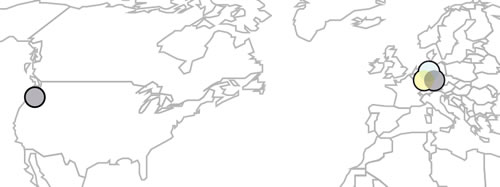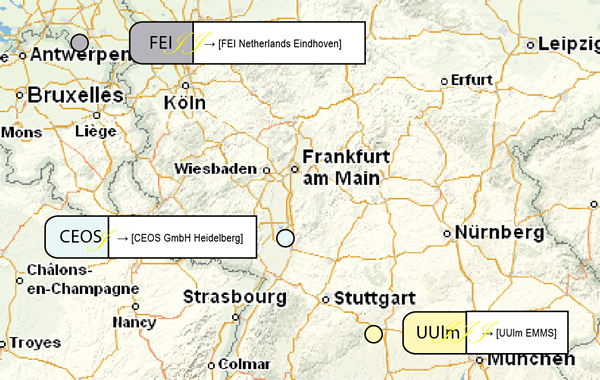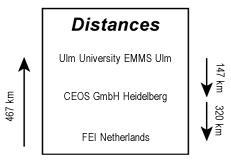About SALVE III
SALVE IIIUlm University's Sub-Angstrom Low-Voltage Electron Microscopy (SALVE) project is a collaboration with one goal in mind: making it possible to study radiation-sensitive materials at ultra-high-resolution by means of transmission electron microscopy (TEM). SALVE I was the feasibility study phase which lasted from January 1st 2009 – December 31st 2010 and had the industry partners CEOS GmbH and Carl Zeiss. After evaluation it was decided that the SALVE approach is promising and a CC/CS-corrected microscope shall be built in phase II. However, in January 2013 Carl Zeiss shut down TEM production and development, whereupon the project was interrupted on September 27th 2013. In response, a new industry partner was selected and after an evaluation it was agreed that the project will have phase III with the industry partners CEOS GmbH and FEI company. The project is supported by the German Research Foundation (DFG) and the Ministry of Science, Research and the Arts (MWK) of the state Baden-Württemberg, Germany. SALVE III is interconnected with SFB/TRR 21 "Control of Quantum Correlations in Tailored Matter" and a planned SFB initiative on peptide therapeutics.
About SALVE III history
Already in the early days of electron microscopy, attempts were made to visualize biological samples with high contrast in a Transmission Electron Microscope (TEM) operating at voltages as low as 6 kV [1]. The aim of the SALVE project, to increase resolution by decreasing radiation damage, was already formulated 45 years ago by Otto Scherzer, a German physicist and pioneer in the work on theoretical and practical aberration correction [2]. But at low voltages the performance of the microscopes was very poor at that time due to the large chromatic aberration which prevented sufficient resolution. The recent advances in the design of suitable aberration correctors by Harald H. Rose [3] allowed the revival of low-voltage electron microscopy [4-6].
The realization of aberration correction at medium voltages by Haider (CEOS GmbH), Rose and Urban et. al. [7] together with the company Phillips (now FEI Company) is an impressive example of the practical application of a theoretical concept dating back to Arnold Sommerfeld (1868-1951) and Otto Scherzer (1909-1982). Aberration correction has greatly enhanced the resolution of the TEM. Harald Rose followed herewith the era of some of the most important researchers in microscopy world-wide. The accomplishments continue the string in early microscopy initiated by Ernst Abbe (1840-1905) and furthered by Ernst Ruska (1906-1988), and Otto Scherzer (1909-1982).
- Wilska A. P. (1964). Low voltage electron microscopy, a 6kV instrument. J. Royal Microsc. Soc., 83:207-211
- Scherzer, O. (1970). Die Strahlenschädigung der Objekte als Grenze für die hochauflösende Elektronenmikroskopie. in english: The radiation damage of objects as the limit for the high-resolution electron microscopy. Berichte der Bunsengesellschaft für physikalische Chemie, 74: 1154-1167, doi: 10.1002/bbpc.19700741113
- Rose, H. , 1990: Outline of a spherically corrected semiaplanatic medium-voltage transmission electron microscope. Optik, 85:19-24
- Kaiser, U. A., 2007: Some Prospects of Transmission Electron Microscopy in Materials Science, Extended abstract of a paper presented at MC 2007, 33rd DGE Conference in Saarbrücken, Germany, Microscopy and Microanalysis, 13:338-339, doi: 10.1017/S143192760708169X
Kaiser, U. A., Chuvilin A., Meyer J., Biskupek J., 2009: Microscopy at the bottom. in: W. Grogger, F. Hofer, P. Poelt (Eds.), Materials Science Microscopy Conference MC2009, 3:1-6, doi: 10.3217/978-3-85125-062-6-379 - Rose, H. , 2007: Criteria and Prospects for Realizing Optimum Electron Microscopes, Extended abstract of a paper presented at MC 2007, 33rd DGE Conference in Saarbrücken, Germany, Microscopy and Microanalysis, 13: 134-135, doi: 10.1017/S1431927607071358
Rose, H., 2009: Future trends in aberration-corrected electron microscopy. Phil. Trans. R. Soc. A, 367: 3809-3823, doi: 10.1098/rsta.2009.0062 - Kaiser, U., Biskupek, J., Meyer, J. C., Leschner, J., Lechner, L., Rose, H., Stöger-Pollach, M., Khlobystov, A. N., Hartel, P., Müller, H., Haider, M., Eyhusen, S., & Benner, G. (2011). Transmission electron microscopy at 20kV for imaging and spectroscopy. Ultramicroscopy, 111: 1239-1246, doi: 10.1016/j.ultramic.2011.03.012
- Haider M., H. Rose, S. Uhlemann, E. Schwan, B. Kabius, K. Urban, 1998: A spherical-aberration-corrected 200 kV transmission electron microscope. Ultramicroscopy, 75:53-60, doi: 10.1016/S0304-3991(98)00048-5
about SALVE III locations
FEI Company development and production facilities for electron microscopes are based in Eindhoven (FEI Netherlands), the headquarter is based in Hillsboro, Oregon (USA). CEOS Corrected Electron Optics GmbH is located in Heidelberg (Germany). The responsible sites of the companies which develop the SALVE microscope are located within Germany and Holland, exactly as Ulm University (Germany).
Click icons in map and links in cases for information;  Group of Electron Microscopy of Materials Science (EMMS), Central Facility of Electron Microscopy, Ulm University ,
Group of Electron Microscopy of Materials Science (EMMS), Central Facility of Electron Microscopy, Ulm University ,  FEI Company,
FEI Company,  CEOS GmbH.
CEOS GmbH.


about SALVE III travel distances

